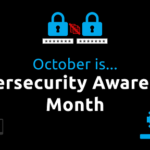
At a time when businesses rely on cloud solutions more than ever to facilitate remote and hybrid work, it’s no surprise that security professionals find themselves grappling with related challenges. When asked about public cloud security, 96 percent of cybersecurity professionals describe themselves as at least moderately concerned, according to the 2021 Cloud Security Report from (ISC)². About half (52 percent) of those surveyed are only moderately confident in their company’s cloud security posture, while 20 percent are either slightly or not at all confident. The report lists data loss, accidental credential exposure and data confidentiality issues as security pros’ top cloud security worries.
If you similarly doubt your ability to maintain optimal cloud security, you might want to consider working with a managed security service provider (MSSP) on posture management, especially if you have a multi-cloud strategy and plan to increase your reliance on cloud solutions in the future.
Why Businesses Need to Focus on Cloud Security Posture Management
Even before the crisis-driven shift to remote work in 2020, many companies already relied heavily on cloud computing. The 2019 RightScale State of the Cloud Survey from Flexera found that 84 percent of enterprises had a multi-cloud strategy, and 94 percent of respondents utilized cloud solutions in general. By 2021, 92 percent of enterprises reported employing a multi-cloud approach, with 43 percent using a mix of various public and private options, Flexera found.
While migrating to the cloud comes with advantages such as greater accessibility, it also complicates cybersecurity. The majority (81 percent) of security professionals attempting to safeguard cloud environments have found that traditional network security solutions are only partially effective or completely useless, according to (ISC)².
Cloud misconfigurations – which occur when cloud users select settings that don’t deliver the necessary level of data security – have become a common issue that bad actors exploit to gain access to sensitive information, according to the Security Intelligence article “Misconfigurations: A Hidden but Preventable Threat to Cloud Data.” In 2018 and 2019, data breaches that resulted from misconfigurations cost companies almost $5 trillion globally, the 2020 Cloud Misconfigurations Report from DivvyCloud states.
Other serious threats to public cloud security include insecure APIs, exfiltration of private data, and unauthorized access, according to (ISC)². Overall, when it comes to protecting cloud environments, cybersecurity professionals have plenty to worry about.
The Advantages of Partnering with a Managed Security Service Provider for CSPM
If you’re concerned about your current cloud security posture management strategy and want to make work less stressful for your internal staff, working with an MSSP like Stratosphere Networks can make a significant difference. We can deploy and oversee the operation of advanced CSPM tools that deliver the following advantages and capabilities:
- Visibility across multiple cloud solutions (including Azure, AWS, Google Cloud, and Kubernetes)
- Ongoing analysis and profiling of security risks
- Over-privileged access identification
- Automatic compliance assessments
- Integration with SIEM and DevOps solutions
- Cost optimization features
- Network managed detection and response (MDR) supported by Security Operations Center as a Service (SOCaaS)
Cloud security posture management is bound to become a bigger issue for businesses in 2022 and beyond. Now is the time to invest if you aren’t confident in your current ability to prevent and respond to cloud-related breaches.
If you have any questions, our security team can assist you. Just give us a call at 877-599-3999 or email sales@stratospherenetworks.com.


